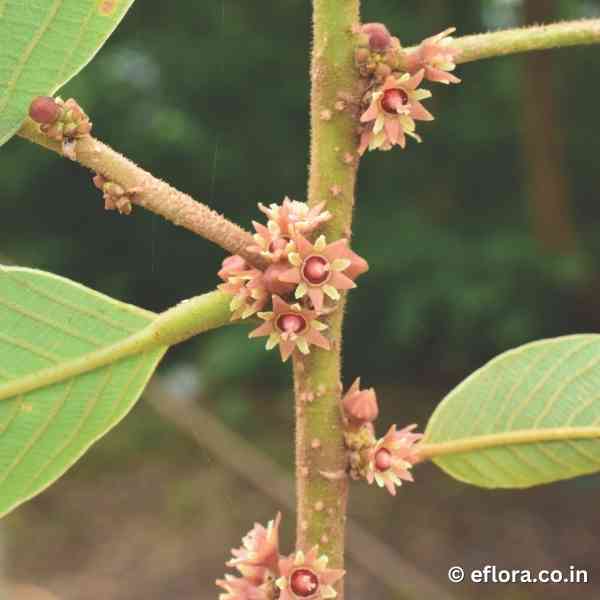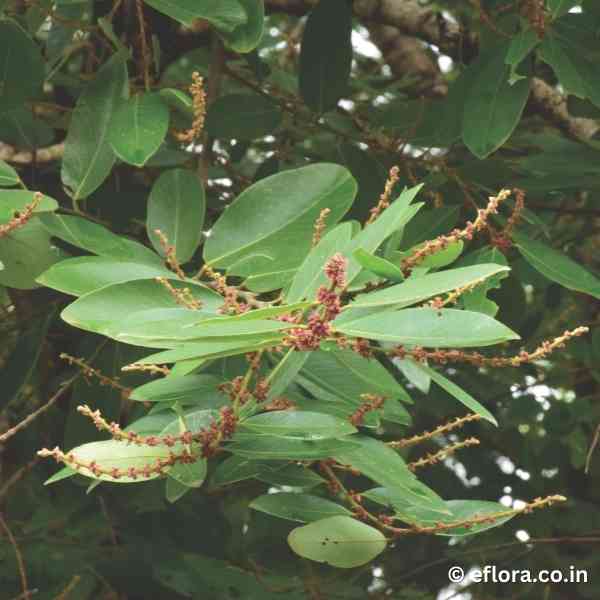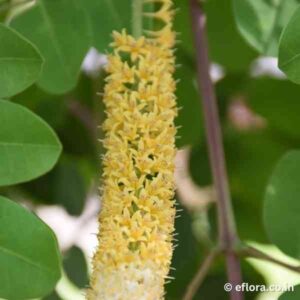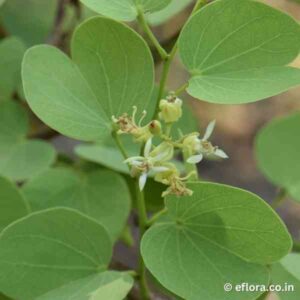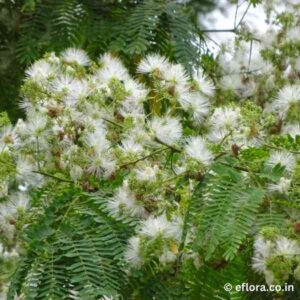Bridelia retusa (Spinous Kino Tree)
A deciduous tree with a spreading crown; it can grow up to a height of 25 m or more. The straight, cylindrical bole is usually very spiny on young trees, it has prominent buttresses. Leaves palmate with 5-7 leaflets, which are oblong to oblong-lanceolate. Flowers solitary, terminal, bright red, ca. 10 cm in diam. Fruit ellipsoid, densely grey-white villous and stellate puberulent.
Flowering & Fruiting: August-December.
Etymology: The genus “Bridelia” is named in honour of Swiss botanist Samuel Elisée von Bridel (1761-1828) a bryologist, poet, librarian at Gotha, tutor to the Princes Augustus and Frederick von Gotha-Altenburg [11]. The specific epithet “retusa” comes from the Latin word retusus, which means blunt or rounded at the tip. This term refers to the shape of the leaves, which often have a rounded apex.

